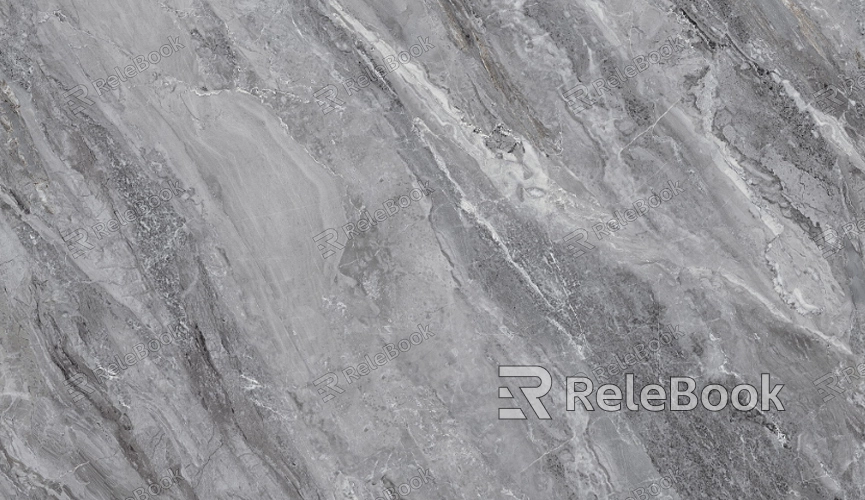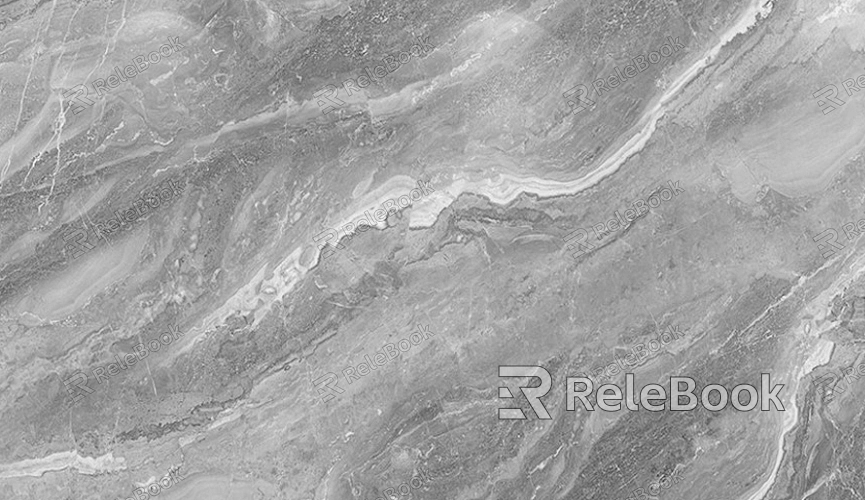How to Draw Marble Textures?
Marble has always occupied an important position in the field of design with its unique luxurious texture and elegant patterns. Whether it's in architectural decoration, interior design, or product exterior design, marble textures can add a touch of nobility and elegance to the works. This article will delve into the methods of drawing marble textures to help you successfully create realistic and beautiful marble effects in your designs.

Understanding the Characteristics of Marble Textures
Marble textures possess a unique complexity and randomness. Their colors usually show a gentle transition, ranging from light to dark, and may include multiple hues such as white, gray, beige, and black. The shapes of the textures are diverse. Some are as ethereal as clouds, while others present clear veins that spread like tree branches. These textures are not arranged regularly but have a natural randomness, which is a key feature we need to focus on when drawing. Mastering these characteristics will lay a solid foundation for our subsequent drawing work and make the textures we draw closer to real marble.
Drawing Marble Textures with Traditional Painting Tools
1. Preparing Painting Tools
We need to prepare paintbrushes, pigments, a palette, drawing paper or canvas, etc. For paintbrushes, it is recommended to choose flat brushes and round brushes of different sizes to meet the needs of drawing different textures. Regarding pigments, prepare gray series, white, black, and other pigments according to the common colors of marble.
2. Applying the Base Color
First, use a large flat brush to apply a layer of base color to the drawing paper or canvas. If you want to depict light-colored marble, you can choose light gray or beige; if you want to draw dark-colored marble, you can use dark gray or black. The base color should be applied evenly, as it will serve as the basic tone of the marble texture.
3. Texture Drawing Techniques
After the base color dries, dip a smaller paintbrush into the pigment to start drawing the texture. You can create color transitions by mixing different colors of pigments. For example, on a gray base color, gently draw cloud-like shapes with white pigment, and then use gray pigment to blend around the white texture to make the transition natural. For marble textures with veins, use a fine paintbrush dipped in dark pigment to draw lines similar to tree branches. The lines should have variations in thickness and curvature to reflect the beauty of nature. Meanwhile, you can use a sponge or other tools dipped in pigment to pat on the painting surface to add a sense of layering to the texture.

Drawing Marble Textures with Painting Software
1. Choosing the Right Software
There are many excellent painting software programs on the market, such as Adobe Photoshop, Corel Painter, etc. This software has rich brush tools and layer functions that can meet our needs for drawing marble textures.
2. Creating the Canvas and Base Color
Create a new canvas in the software. Set the size and resolution of the canvas according to your needs. Then, use the fill tool to fill the canvas with the base color. The method is similar to applying the base color in traditional painting, but in painting, you can adjust the color values more precisely.
3. Using Brushes and Filters
There are numerous types of brush tools in the software that can simulate various painting effects. We can choose the appropriate brushes to draw marble textures. For example, use an airbrush brush to create soft color transitions and a hard brush to draw clear texture lines. In addition, you can also utilize the filter functions in the software to enhance the texture effect. For example, use the blur filter to make the edges of the texture softer and the noise filter to add a grainy feel to the texture. By continuously adjusting the brush parameters and filter effects, you can draw very realistic marble textures.
Creating Marble Textures in 3D Modeling Software
1. Preparing the Base Model
In 3D modeling software, first create the model to which you want to add the marble texture. This model can be a simple geometric shape, such as a cube or a sphere, or it can be a complex object model.
2. Texture Mapping
Import the prepared marble texture image into the 3D modeling software. Then, attach the texture to the surface of the model through texture mapping. During this process, you need to adjust the texture coordinates and scaling ratio to ensure the correct display of the texture on the model. For example, for a cylindrical model, if you want the texture to extend along the axial direction of the cylinder, you need to adjust the texture coordinates accordingly.
3. Material Adjustment
In 3D modeling software, you can also adjust the properties of the marble material, such as glossiness, reflectivity, etc. The adjustment of these properties can make the marble texture look more realistic. For example, increasing the glossiness can make the marble surface present a smooth texture, which is more in line with the appearance of real marble.
Through the above introduction of the methods for drawing marble textures, whether it's in traditional painting, painting, or the application of textures in 3D modeling, each has its own techniques and key points. I hope these contents can help you successfully draw beautiful marble textures in your designs. If you want to obtain more high-quality 3D models and textures, you can download them from the Relebook website. Abundant resources are waiting for you to explore.
FAQ
What should I do if the drawn marble texture looks fake?
If the texture looks fake, it may be due to unnatural color transitions or overly regular textures. In traditional painting, you can practice more on color mixing techniques to make the color transitions more natural. In painting, you can adjust the pressure sensitivity and transparency settings of the brush to make the color changes more natural. At the same time, increase the randomness of the texture and avoid repeating or symmetrical patterns.
What should I do if the texture is stretched or deformed in 3D modeling?
This is usually caused by improper setting of the texture mapping coordinates. You need to carefully check the parameters of the texture coordinates and readjust the scaling and direction of the texture according to the shape and size of the model. For complex models, you may need to divide the model or use multiple textures to avoid excessive stretching.
How can I make the marble texture more three-dimensional?
In traditional painting, you can achieve a three-dimensional effect by increasing the contrast between light and dark. In painting and 3D modeling, you can utilize light and shadow effects, such as adding highlights and shadows and adjusting the bump properties of the material. Through these methods, the marble texture can look more three-dimensional visually.

